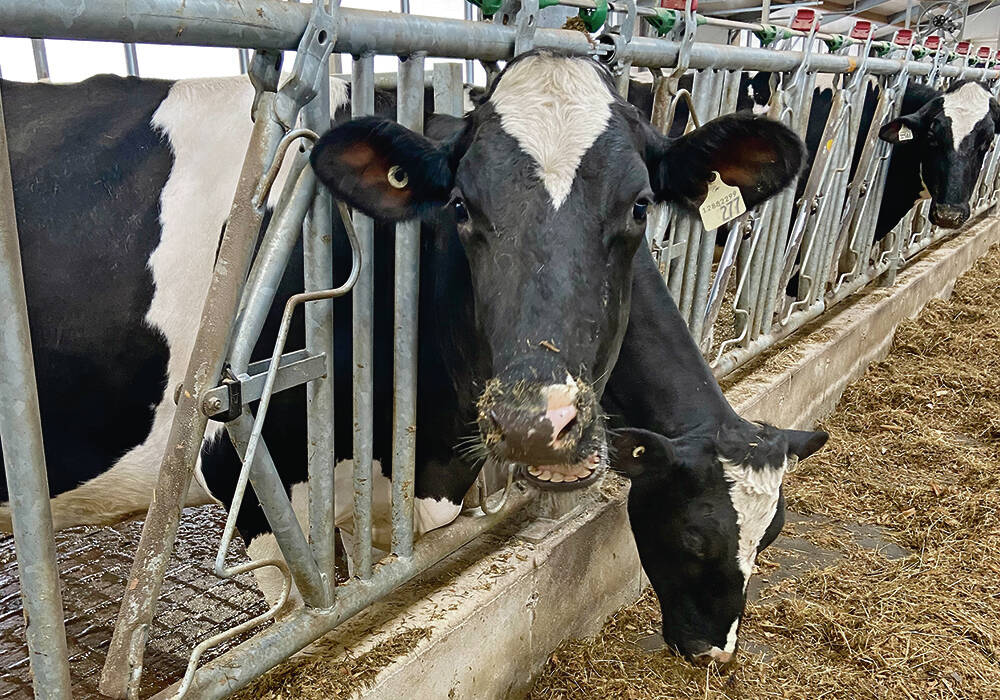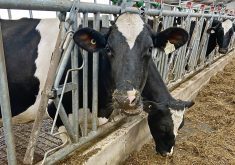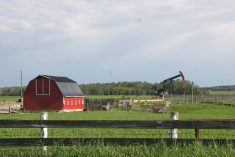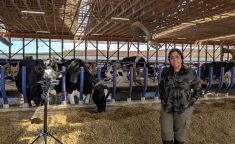The Working Cow Horse Classic, is a fast-paced event with roots dating back to the California vaqueros of the 1700s. The half wild cattle of the early west required a fast, well-trained horse, and the process of training a horse to this high level could take several years of steady work. Cowboys were rightfully proud of their mounts, and their demonstrations soon became a competitive sport. These skills continue today in working cow horse, where a versatile, brave and obedient horse is required for the various activities.
Working cow horse is composed of several different events; the Calgary Stampede requires a reining pattern and then cow work. The reining portion, also known as dry work, is a pattern where the rider guides the horse through a series of manoeuvres including loping figure eights with flying lead changes, straight run downs with long sliding stops, and vertigo-inducing spins.
Read Also

Alberta Milk opens annual hospital fundraiser
Alberta Milk embarks on holiday season campaign to raise money for Alberta Children’s Hospital Foundation
Cow work follows, where a single steer is released into the arena for the horse to control. The horse is first asked to hold the cow at one end of the arena – known as “boxing.” Then the cow is run along the long wall of the arena and turned. Lastly, the horse manoeuvres the cow into the centre of the arena and causes the cow to work a tight circle each direction. Horses show a high degree of courage in cow work, often working so close that the rider could literally reach out and touch the steer.
Most working cow horse competitions allow horses of all breeds to compete. The American Quarter Horse is the most frequently seen breed, but you’ll also see Appaloosas, Paints and even Arabians competing at times. The Calgary Stampede’s Working Cow Horse Classic features classes for finished “bridle” horses aged six and over, “hackamore” horses aged 4 to 5 and non-pro classes for riders who aren’t professionals.
Mike Ross, Western Performance Horse Committee member says that working cow horse is one of the most exciting equine spectator sports. “The run down the fence can be dangerous, but it’s also a very exciting part of a working cow horse competition,” he says. “It takes a talented horse and a good rider that’s glued to the saddle to handle the sudden turns. It’s a very high energy situation.”
Brad Pedersen of Lacombe, AB, is one contestant worth watching at the Calgary Stampede’s upcoming working cow horse competition. Brad has been riding cow horses for over 20 years after apprenticing as a teenager under talented professional Les Timmons. “In my opinion working cow horse is an interesting event to watch,” Brad says. “There is a lot of variety and speed to keep everyone interested.”
As a professional trainer Brad expects to compete with a number of horses at the Calgary Stampede, riding both bridle and hackamore horses. “I’ll probably be taking Smart Sassy Date in the bridle class,” Brad says. “He’s a sorrel AQHA gelding owned by Greg and Lois Gartner. The horse is nine now, and has a lot of experience in both working cow horse and cutting. He’s a great horse with a lot of talent – I think he’s earned over $30,000 in working cow horse through the years.”
Brad says that preparing a horse for working cow horse is extremely challenging. “First you have to find a horse that is physically and mentally capable of doing all three events,” he says. (Some working cow horse competitions have a third event called “herd work”, which is similar to cutting except the rider is allowed to guide the horse with the reins, or help them stop on the cow. Herd work is not part of the Stampede’s working cow horse competition).
“Because there are several totally different parts in working cow horse, it takes a long time to prepare a horse to compete,” Brad continues. “The horse has to be fit, sound and responsive. We treat our horses like athletes, doing everything in our power to keep them comfortable and sound. Our horses are looked after better than most people!”
Brad describes fence work as “a thrill.” Running down the fence at a high rate of speed and then making a sharp turn to double back after the cow requires a lot of trust between horse and rider. “I’ve never been involved in a serious wreck, but they can occur,” Brad explains. “It takes time to learn how to be at the right spot at the right time. And when you throw a cow into the mix, anything can happen!” .














